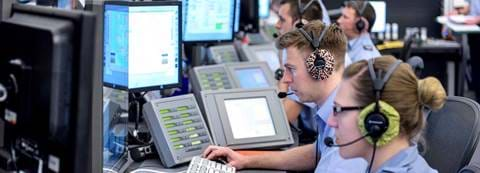Making ATC as easy as 1,2,3
How Chelton’s Air Traffic Management portfolio is helping to decompress the highly pressured world of Air Traffic Control.

The human eye is one of the most complex parts of the body – surpassed only by the brain. It can focus on 50 different objects per second, with a resolution equivalent to 576 megapixels – an extraordinary amount when compared to the ‘high’ resolution of an Apple iPhone 13 at just 12 megapixels. In days gone by, the human eye was the original air traffic controller. Before Air Traffic Control (ATC) towers existed, pilots would use visual navigation methods such as a compass, map and identification of ground features to ascertain the aircraft’s position. Unsurprisingly, it was difficult to accurately and safely verify an aircraft’s position.
Help on the ground was needed, so the roles of Civil Aviation Traffic Officer and Radio Officer were created. They handled air traffic through the use of radio and wireless telemetry equipment. In 1920, the world’s first dedicated Aerodrome Control Tower in Croydon, London was born with three simple features; a platform 15 feet above ground level, large windows and a wind vane.
Throughout the 1920s, the ATC Tower evolved into the recognisable airport technical structure we know today, giving ATC operators 360° visibility, increased operational range and reduced topographic air mass interference.
The first ever Civil Aviation Traffic Officers provided just the basics – location and weather to a dozen or so daily flights that were tracked using radio-based navigation and plotted paper maps with pins and flags. However, to improve accuracy and reduce any potential human error, radio navigation needed to evolve.

A new experiment between British and American scientists to locate objects, such as ships and aircraft, by reflecting radio waves was introduced known as Radio Direction and Ranging - or the more catchy radar. Originally developed as a defensive mechanism in WWII, it took some time to ensure the design systems and equipment met the vastly different requirements of civil ATC. Fast-forward almost 100 years and radar is the standard international practice to monitor airspace, with the original 1930s invention being used as the primary system. Like the original, it uses reflected radio signals from all its equipment on the ground to see what gets reflected back. However, it doesn’t differentiate between aircraft, high terrain, weather and even flocks of birds. To ensure controllers have the best possible image of what’s in the skies, a secondary system was needed. The secondary radar system, based on a military function of Identification Friend or Foe, is much more selective and only displays information from the aircraft equipped with a transponder on board. The combined might of the primary and secondary radar systems ensured controllers not only received an accurate image of an aircraft’s navigation, but could also monitor its intention and intervene if necessary.
Although radar provides an accurate and dependable picture of the skies for air traffic controllers, it doesn’t stop their job being named as the most stressful in the world. Only 1% of those who go through training qualify as a controller and will one day become responsible for thousands of flights per shift.
A notable trend in the industry is the move towards digital displays meaning more information is readily available for controllers to view, with better resolution and on larger displays. Although controllers no longer have to deal with misplaced pins or flags on paper maps, they still have to contend with frequency congestion, weather, communication and noise often at the same time. As ATC systems can now display much more information, this means controllers have an increasing workload with more flight data to monitor – which could lead to a higher error rate.
With the adoption of modern technology, controllers face new challenges such as space constraints, readability of screens and ease of use in order to find and use relevant information as and when needed.
The display is the heart of your ATC system and Chelton’s RDS suite is tailored down to the finest detail to ensure it works for your needs. Thanks to its close relationships with ATC Officers, the radar display is easy to use and navigate, with features including Interactive Mapping, Coloured Target Labelling, Dynamic Loadable Maps and 3D flight path monitoring to name just a few.

The modular nature of the RDS is flexible enough to adapt to evolving challenges on the airfield. For example, the system enables extra safety features to be added on to reduce the risk of human error, if required. The modular nature of RDS enabled Chelton to be selected by the British Royal Navy to provide, not only ATC systems to naval bases on the ground, but also to the newest aircraft carriers as part of the UK Carrier Strike Group.

The simplified workflow, along with agnostic system, reduces the existing training burden. Previous iterations of Chelton’s RDS suite are well understood having been implemented in a number of commercial and military airports across the UK. Its updated ATM products are built on the same successful foundations, meaning there are very few training requirements.

Chelton understand what controllers need and work closely with them to identify areas for development to reduce their workload.
Chelton’s RDS products have been at the heart of Military ATC systems for over 20 years and it’s been successful in developing this into a fully capable advanced ATM system for civil and military aviation. This, teamed with its impressive Mean Time between Failure (MBTF) rates, makes Chelton a great choice for whatever size airport you run.
Chelton are there every step of the way from installation to support to help ensure your ATM system is tailored to your exact needs.
Your quote basket is currently empty
 Please select the type of quote you require for this product:
Please select the type of quote you require for this product: